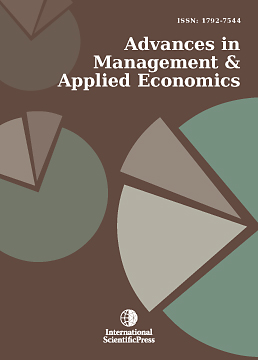Advances in Management and Applied Economics
The Effects of Indirect Taxes on Consumer Prices: Empirical Evidence for Greece
-
 [ Download ]
[ Download ]
- Times downloaded: 20580
-
Abstract
The importance of the tax incidence is obvious both for academics and for policymakers. Using data of HICP and CT_HICP, it is proposed in this article that the influence of CT_HICP of the imposition of indirect taxes determines the extent of tax incidence and the contribution of indirect taxes to inflation. The empirical investigation, based on simple log linear regression technique with dummy variables showed that although after the imposition of the indirect taxes at the beginning of 2010, the Harmonized Index of Consumer Price with constant taxes (CT_HICP) exhibited a downwards kink, this is rather the outcome of the recession occurred during this period than of any absorption of the imposed indirect taxes on the part of the producers. Based on these findings it is shown that the least contribution of indirect taxes to the general inflation index through the main categories are estimated as the product of the difference of % change of HICP – CT_HICP and the share of this category into the “basket” of HICP. The empirical investigation showed that the contribution of indirect taxes to the inflation represented by HICP is at least 82.0% in 2010 and 60.7% in 2011. The 2-digit categories through which indirect taxes exhibited the highest contribution to the general index inflation rates was: For 2010 to the total tax contribution 4.18% (out of 5.11% inflation) the Transport contributed 1.55%, Alcoholicbeverages- tobacco 0.52%, Restaurants and hotels 0.36%, Food and non-alcoholic beverages 0.31%, Clothing and footwear (0.31%) and Miscellaneous goods and services 0.31%. In 2011, to the total tax contribution 1.39% (out of 2.29% inflation) the categories taking the higher part in this total tax contribution are: Restaurants and hotels (0.95%), Food and non-alcoholic beverages (0.35%), Housing - water- electricity- gas and other fuels (0.13%).
